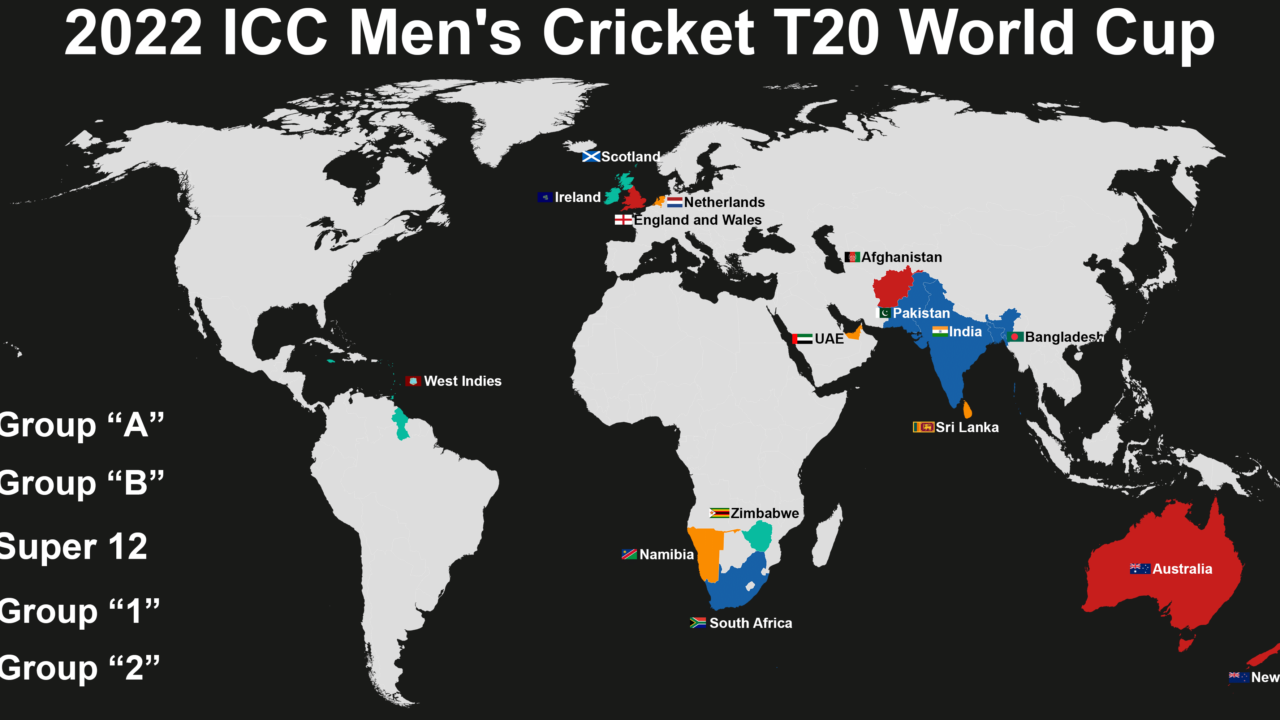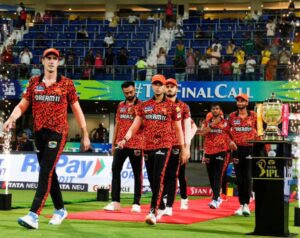
Pat Cummins walking out his team. (Source SRH X)
How should we view the season that Sunrisers Hyderabad (SRH) had in IPL 2024? Does their trouncing in the final at the hands of Kolkata Knight Riders (KKR) undermine all the good work done before? Or will the batting template that they followed this season gain currency in years to come, and be seen as a watershed?
Facts first. This was SRH’s first foray into the play-offs since 2020. In two of the last three seasons, they had finished rock bottom. Whatever they were doing then, with just 13 wins across three seasons, clearly didn’t work. A radical transformation wasn’t just welcome, it was much needed.
When the dust settled on this campaign, the record books will tell you that this SRH vintage slashed and burned their way to three of the four biggest totals in the IPL’s 17-year history. The 287-3 against Royal Challengers Bengaluru (RCB) at the Chinnaswamy Stadium – a total that may not be overhauled any time soon – included a record-breaking 22 sixes. Of the 1260 maximums hit in the league in 2024, as many as 112 came from the bats of Abhishek Sharma (42), Heinrich Klaasen (38) and Travis Head (32).
Any way you look at it, those are astonishing numbers. And they were made possible by a philosophy that encouraged the batters to go for broke without fearing the consequences. In their last league game, Sunrisers chased down 215 in 19.1 overs against Punjab Kings. “Nothing changes when we go into the Playoffs,” said Daniel Vettori in a video the franchise uploaded after the game. “Take the game on, play exactly the same and stay consistent and true to our methods, so, well done boys.”
You don’t need to be a cricket genius to know that tactics laced with so much risk can also fail, and spectacularly at times. It’s like teams playing the high line in modern football. It allows you to press and harry the opposing team, but also leaves you vulnerable to the ball over the top.
For SRH, it just so happened that they were caught cold on the biggest stage of all — the final. It didn’t help that they were up against the most accomplished side in the competition, who also had the most complete attack. Mitchell Starc had rediscovered his mojo, as he so often does on the big stage, and the support cast was magnificent. Once Starc produced a peach that crashed into Abhishek’s off stump and Vaibhav Arora snagged Travis Head first ball, you didn’t need a crystal ball or tea leaves to say which way the game was going.
Exactly a month before the final, at the Eden Gardens, KKR’s best-laid plans had been shredded when Punjab Kings chased down a target of 262 in just 18.4 overs. That night, Harshit Rana, Andre Russell and Varun Chakaravarthy had combined figures of 0-143 from nine overs. In the final, they had 6-52 in 8.3 overs. That’s the nature of cricket, and the T20 format in particular.
What hurt Sunrisers most was their gun players running out of ammunition at the most crucial time. Head ended the season with scores of 0, 0, 34 and 0. Abhishek Sharma had 17 runs in his last three innings, while Nitish Kumar Reddy had 27. Klaasen got to 50 just once in his last nine knocks. KKR’s big boys revelled on the grand stage, SRH seemed inhibited.
If they can hang on to Pat Cummins as captain, and retain the six-hitting unit of Head, Abhishek and Klaasen, SRH will again be dangerous and intimidating opponents in 2025. More importantly, the Orange Army fan base can look ahead to that competition with optimism rather than diffidence. Their team aimed for the stars, and were brought back down to Earth only at the very end.

